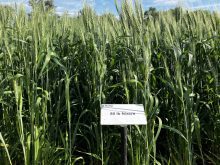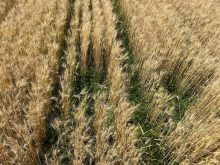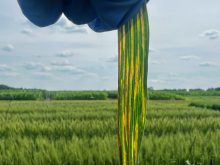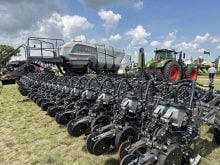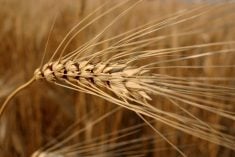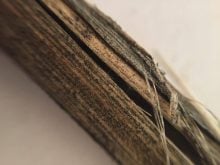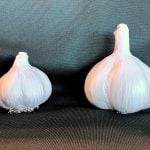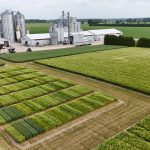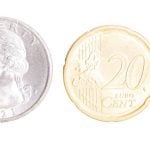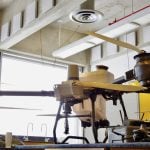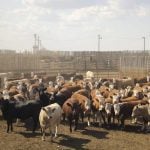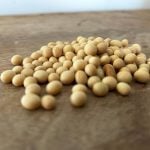All blights in peas are not created equal — so make sure you know which blight is in your field before firing up the sprayer.
It can avoid an expensive mistake as one of the two common blights affecting peas – mycosphaerella blight – can be treated with a fungicide, while bacterial blight cannot.
“What’s really important with mycosphaerella blight is scouting for it,” says Dennis Lange, pulse and soybean specialist with Manitoba Agriculture. “Every field will have mycosphaerella blight at some point in the growing season. The later it moves into the crop, the less yield it’s going to affect.”
Read Also

Prairie-made combine concaves make Time top inventions list
Thunderstruck Ag Equipment of Winkler, Manitoba earned a place on Time’s list of top 100 influential inventions for its Razors Edge combine concave, designed to improve efficiency at harvest.
In keeping with that idea, Lange added that the critical point for keeping mycosphaerella blight in check is in the early flowering stage. Once peas reach the pod fill stage, mycosphaerella does not limit yield potential.
When to spray
Mycosphaerella blight is more likely to present a problem for pea growers who have received more rainfall, so growers in wetter areas of agro-Manitoba should take note.
“In dry years you can wait a little bit, but in wetter years you’ll be in there a little earlier and taking fields on a case-by-case basis,” Lange says.
There are a number of factors growers can take into account when deciding to spray a fungicide. Lange notes there are online worksheets to help guide pea growers’ decision-making process. They take into consideration factors such as:
- how dense is your plant canopy?
- what does the weather forecast look like?
- does the plant canopy have a lot of morning dew?
Based on that, it’s time to get scouting. The early flowering stage is the best time to look for symptoms of mycosphaerella blight and tally a score using the worksheet.
“When you peel back the canopy and you look down into the lower canopy, on those lower leaves, you’ll see the initial symptoms as small purple freckles,” Lange says.
If you come up with a score of 65 or higher based on your worksheet, this will be your guide to spraying fungicide to keep mycosphaerella blight in check.
The better you can time a fungicide treatment likely determines whether or not a second spray treatment is needed.
“If you are going with two fungicide applications, try to go with two different fungicide groups to help slow resistance down,” Lange cautions.




